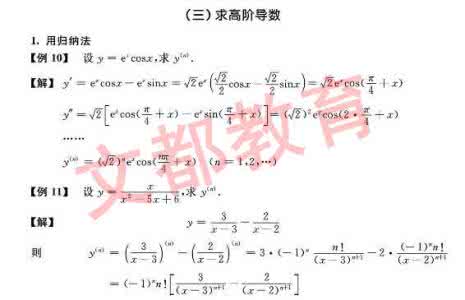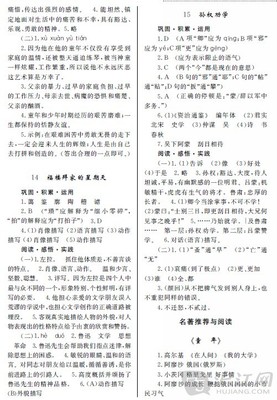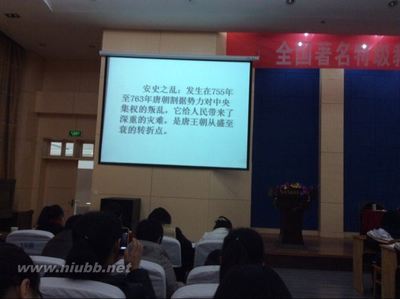Unit 4 I want to be an actor重点难点
(一)如何谈论工作
1、询问别人的职业可以用what引导的特殊疑问句:
What+助动词do+某人+动词do?
e.g. What do you do? 你的工作是干什么?(你的职业是什么?)
I'm a doctor. 我是医生。
※如果被询问的是第三人称单数,助动词就要用 does.
e.g. What does she do? 她的职业是什么?
She is a teacher. 她是个教师。
e.g. What does your father do? 你爸爸是干什么工作的?
He is a police officer. 他是一名警官。
※询问别人的职业还可以说:
What's your job?
What work do you do?
What sort of things do you do?
2、询问别人的工作还可以用where引导的特殊疑问句:
Where+助动词do+某人+动词work+?
e.g. Where do you work? 你在哪里工作(上班)?
※如果某人是第三人称单数,助动词还是应该用 does。
e.g. Where does your brother work? 你哥哥在哪里上班?
He works in a bank. 他在一家银行上班。
※对特殊疑问句的回答应该是问什么答什么。如 What询问的是职业,回答应是表示职业的名称;Where询问的是地点,回答则应是工作的场所。
3、What does her mother want to be?
她妈妈想要干什么工作?(想要从事什么职业)
want想,要
(1)want to do sth. 想要做……
e.g. I want to go home. 我想要回家。
He wants to play football. 他想要踢足球。
(2)want to be+表示职业的名词 想要从事……,想要成为……
e.g. What do you want to be? 你想要从事什么职业?
I want to be a police officer. 我想当一名警官。
(二)动词 want, work的一般现在时的用法
1、want v. 想
(1)、want+sth. 想要……
e.g. I want a book. 我想要一本书。
(2)、want+to do 想要做……
e.g. He wants to play football. 他想要踢足球。
(3)、want+sb to do 想要某人做……
e.g. He wants me to help him. 他想我帮助他。
2、work v. 工作
(1)work+表地点的介词短语 在……地方工作
e.g. I work in a school. 我在一所学校工作。
(2)、work as +n. 充当,担任
e.g. My father works as a doctor. =My father is a doctor. 我爸爸是个医生。
注意:
①、当 want、work的主语是第一、二人称和第三人称复数时,动词用原形:
e.g. I want to be a reporter. 我想成为一名记者。
They work in a hospital. 他们在医院上班。
You work in a bank, don't you? 你在银行上班,是吗?
②、当 want, work的主语是第三人称单数时,动词后要加-s:
e.g. She works in a restaurant. 她在一家餐馆上班。
My sister wants to be a nurse. 我姐姐想当一名护士。
(三)肯定与否定的陈述:
陈述句是用来叙述或否定一件事情或看法的句子,句尾用句号。
e.g. I'm a reporter. 我是一个记者。
My work is interesting. 我的工作很有趣。
She isn't a worker. 她不是工人。
典型例题
例 1 选择:
What's your sister? ________
A.She is a sales assistant. B.She is nice.
C.She is cooking dinner. D.She works in a bank.
分析:答案为A。问句是问职业或身份的,相当于:What does your sister do?或What's your sister's job?,其回答应该是关于职业的名词。所以选择答案A。
例 2 选择:
Sally often ________ books in the evening, but this evening she________a kite.
A.read, makes B.reads, makes
C.read, is making D.reads, is making
分析:答案为D。第一句中的often表明“看书”是经常发生的事情,要用一般现在时,而主语是第三人称单数,所以用reads,第二句的
意思是今晚她在做风筝,不是和往常一样,而是表达正在做的事
情,用现在进行时,所以选择答案D。
例 3 交际:
________? He wants to be a bank clerk in the future.
分析:答语的意思是:他将来想要成为一名银行职员,由此可以推断出问句是询问“他将来想要做什么工作?”,所以用:What does he want to be in the future?。
例 4 选择:
There are four ________ in the office.
A.polices B.policeman
C.policemen D.police officer
分析:答案为C。根据句子意思可以判断此处的名词要用复数形式,警察可以用:policeman和police officer来表示,但policeman的复数是policemen, police officer的复数是police officers。
例 5 词汇:
It's d________ to cross the road(马路)when the light is red.
分析:答案为dangerous。根据提示词road和最后一个单词red,可以推测此句的意思是当红灯亮的时候过马路是很危险的,所以此空
填上dangerous最恰当。
例 6 选择:
My little sister is badly ill. She is ________ hospital.
A.in B.in the C./ D.the
分析:答案为A。be in hospital这个词组的意思是生病住院,而be in a/the hospital指的是在医院里,或者是在医院工作,或者是照顾病人。根据第一句我妹妹病得很重,可以判断她生病住院了,所以选择答案A。</PGN0069.TXT/PGN>
例 7 词汇:
The r________ like to write stories.
分析:答案为reporters。根据句子的意思可以判断是记者,所以用reporter,但此句的动词用的不是第三人称单数,主语不可以是第三人称单数,所以用它的复数形式:reporters。
例 8 词汇:
Are you i________ in the jcb? Please call me at 7502712.
分析:答案为interested。Interesting是形容词,意思是有趣的、有意思的,而对某事感兴趣要用:be interested in something,此句意在询问“你对这项工作感兴趣吗?”所以用后者,填interested。
例 9 改错:
Does he a police officer?
分析:Is he a police officer?根据句子意思“他是一名警察吗?”可以确定“是”要用is,又因为does后面跟动词的原形,所以要把does改成is。
例 10 选择:
-Do you like swimming in holidays? -________
A.Yes, I'd love to. B.No, I don't.
C.No, I'm not. D.Sorry, I'm afraid not.
分析:答案为B。一般疑问句的答语一般与问句中的助动词一致,即用问句中的助动词,本句的回答有两种:Yes, I do./No, I don't.
例句讲解
1.What does he/she do? 他/她干什么工作?
这是个询问别人职业的常用句型。请注意它与 "How do you do?" 的区别。试比较:
—What do you do? 你是干什么工作的?
—I am a teacher. 我是位教师。
—And what does he do?那他又是干什么工作的呢?
—He is a doctor. 他是个医生。
—How do you do? 您好!
—How do you do? 您好!
2.I want to be an actor. 我想要当一名演员。
(1)句中want意为“想,想要”,是动词。want to be表示“想要成为”,to be是动词不定式作want的宾语。如:
I want to be a VIP in the future. 将来我想成为一名重要人物。
(2)want+名词或宾格代词,作宾语,即:want sth. 表示“想要某物”。如:
We want some apples. 我们想要一些苹果。
也可用would like代替。如:
I would like some milk, please. 我想要一些牛奶。
3.I like talking to people. 我喜欢与别人交谈。
talking to people为动名词短语作like的宾语,类似的用法有很多。如:
I hate smoking in the room. 我讨厌在屋里抽烟。
I prefer drinking tea to coffee. 我喜欢喝茶而不喜欢喝咖啡。
4.I'm very busy when people go out to dinners. 当人们出去吃饭时,我很忙。
(1)此句含有when引导的时间状语从句,强调“特定时间”,表示“当……时”。如:
I was asleep when the clock waked me up. 闹钟叫时,我正睡觉呢。
(2)busy(形容词)词意是“忙的,繁忙的”。如:
I'm busy today.=I have no time today. 我今天很忙。
busy的反义词是free。
be free=have time, 如:
Doctors are busy people. 医生都是大忙人。
be busy at/with sth. 忙于某事=be busy doing sth.。如:
She is busy at/with her homework. 她正忙着做家庭作业。
I'm busy writing letters. 我正忙着写信呢。
5.If your answer is "Yes", then we have a job for you as a… 如果你的答案是“是的”,那么我们有适合你的一份工作……
as(连词;介词)
连词:照……;像……;随……;当……时。如:
Do as I say. 照我说的去做。
You can do as you like. 随便你怎么做都可以。
I saw her as she was getting on the bus. 当她正要上公交车时,我看到了她。
介词:当作……;担任……;当……时。如:
He is known as a great artist. 他作为伟大的画家闻名。
This room is used as a study. 这房间当作书房用。
As a boy, he often went swimming in summer. 孩提时代他常在夏天去游泳。
例题解析
【例1】My father is a worker. (对画线部分提问)
________ ________ ________ ________ ________ ________ ___________
精析 提问职业的特殊疑问句有两种表达方式,以该题为例,既可说What's yourfather? 又可说What does your father do?
答案 What's your father? /What does your father do?
【例2】选择填空
— ________does your mother do?
—She is a driver.
A.Who B.Where C.What D.How
精析 从答语She is a driver. 可知本题所询问的是“某人的职业”,询问“职业”时,可以用问句“What do you do?”或“What are you?”等。
答案 C
【例3】Li Tao is a doctor. (同义句改写)
________ ________ ________ ________ ________ ________ ___________
精析 医生这一职业即在医院工作,该句据此改写。
答案 Li Tao works in a hospital.
【例4】补全下列对话
A:Hello, Han Mei! May I have a talk with you?
B: 1 .
A:What's your father's 2 ?
B:He's a doctor.
A: 3 does he work?
B:He works in a children's hospital.
A:Can you tell me 4 about your father's work?
B:I don't know much 5 his work. He works five days a week, from 6 to 7 .Sometimes he works on Saturdays or 8 . He comes home very late in the evening.
After supper he goes out 9 a walk. 10 he goes to bed, he often reads somenewspaper.
A:Thank you. Han Mei.
精析 做完形填空应注意阅读好上下文,来判断所填内容。
1.因为是在回答请求,应填Sure或Certainly;
2.根据答语可知是询问职业,应填job;
3.回答工作地点应用Where;
4.关于某人的某事,应填something;
5.关于某事,应填about;
6.和7.five days a week即为from Monday to Friday;
8.根据Saturdays,此处应填Sundays;
9.短语go out for a walk, 此处应填for;
10.根据主句,判断该处应填Before。
答案 见精析
【例5】他是做什么工作的?
误:What job does he do?
正:What does he do?
正:What is he?
精析 询问某人的身份或职业有两个句型:①What do you do? ②What are you?
【例6】改错
精析 where的意思是“在哪里”,已包含了介词in的意思。
答案 D 去掉in。
典型例题例句讲解
1.What are you doing? 你在干什么?
表示询问“某人正在干什么”可用上述句型,即 "What+be.+主语+doing?" 其中be动词根据主语的变化来选择is或are。如:
What is he doing? 他正在干什么?
What is the girl doing? 那个女孩正在干什么?
What are the students doing? 那些学生正在干什么?
2.He's doing homework. 他正在做作业。
(1)homework意思为“家庭作业”,它是一个不可数名词,没有复数形式。如:
Students must do their homework every day. 学生必须每天做家庭作业。
(2)“做家庭作业”可译为do homework或do one's homework。one's 为形容词性物主代词,在句中,它必须在人称和数上与主语保持一致。如:
I have a little time to do my homework. 我只有一点时间做家庭作业。
3.Here are some of my photos. 这里有我的一些照片。
(1)句中的some译为“一些”,直接修饰可数名词和不可数名词。如果名词前面有限定词(冠词、指示代词或物主代词)修饰时,则用some of。如:
Would you like some of these apples? 这些苹果你是不是吃几个?
I don't like some of the pictures. 其中有些画我不喜欢。
some of 还可接人称代词宾格。如:
Some of us like singing and dancing. 我们有些人喜欢唱歌或跳舞。
注意:当some用作代词(单独或与of连用)时,要重读成[s?m]。试比较:
Give me some bananas. 给我一些香蕉。
You may have some of the bananas. 你可以吃一些香蕉。
(2)由副词There和Here开头的倒装句中谓语动词的单复数应由后面真正的主语决定。主语是单数形式,则谓语动词用单数,主语是复数形式,则谓语动词用复数。如:
Here is your book. 这是你的书。
Here are your books. 这些是你们的书。
(3)photo是无生命的事物,其复数形式是photos,应与tomatoes区分开来。photo译为“照片”,相当于picture,picture还有“画”的意思,但photo没有。
例 1 改错:What are they talking?
分析:What are they talking about?
因为句中的talk是不及物动词,后面要跟介词再接宾语。在英语中,表示“和……说话”习惯上要用词组talk to sb.或talk with sb.,表示“谈论某事”则用词组talk about sth.
例 2 改错:Thank for your letter and the photos.
分析:Thanks for your letter and the photos.
因为在英语中thank sb. for…和thanks for…这两个短语都表示“因为……而感谢……”。thank sb. for…中的thank是动词,thanks for…中的thanks是名词复数,注意短语中的for是介词,后面接名词或动词的ing形式。例如:
Thanks for your help.后面接名词。
Thanks for helping me.后面接动词的ing形式。
例 3 改错:Here some of my photos are.
分析:Here are some of my photos.
这是一个倒装句,为了强调地点状语,将here放在了句首,句子的主语和谓语倒装,它还可以写成:Some of my photos are here.注意:若主语是代词时,则不能倒装,例如:
Here it is.它在这儿。</PGN0088.TXT/PGN>
例 4 I do my homework after supper.(用now代替after supper)
分析:I am doing my homework now.
after supper晚饭后,指我经常在晚饭后做作业,用的是一般现在
时,而now现在要用现在进行时,其构成是:主语+am/is/are+动
词的现在分词+…。
例 5 -W________ do you want to read books?
-Let's make it at half past ten.
分析:以字母W开头的单词有很多,根据答语Let's make it at half past ten.是表达时间,所以用when。
例 6 改错:That sounds well.
分析:That sounds good.
因为sound是系动词,后面应该跟形容词作表语,而well是副词,所以句中的well要换成good。类似的词还有感觉feel,闻起来smell,尝起来taste等。
例题解析
【例1】— ________are they doing?
—They're ________.
A.Whose; playing B.What's; runing
C.What; running D.Who; doing
精析 问某人在干什么应用疑问词what, run应双写n再加-ing。
答案 C
【例2】按要求改写下面的句子
1.She is sitting under the tree. (对画线部分提问)
_______________________________________________
2.Open the window, please. (改为否定句)
_______________________________________________
3.They are doing their homework. (改为一般疑问句)
_______________________________________________
4.She is helping her mother with cooking.(改为否定句)
_______________________________________________
精析 1.对地点的提问应用疑问词where。2.祈使句的否定句结构为:Don't+动词的原形。3.现在进行时的疑问句应把be动词放在主语的前面,且be要大写。4.现在进行时的否定句应在be动词的后面加not。
答案 1.Where is she sitting?
2.Don't open the window, please.
3.Are they doing their homework?
4.She isn't helping her mother with cooking.
【例3】His mother ________in a hospital, but she ________there these days.
A.is work; doesn't work B.is working; works
C.works; isn't working D.works; not works
精析 本题是对一般现在时和现在进行时的综合考查。前句表示“他的妈妈在一家医院工作”,应用一般现在时,而后句表示“这些天她不在那里工作”,these days表示的是最近一段时间内持续发生的动作。
答案 C
【例4】I ________have breakfast at 7:00. But ________it's 7:20, I'm having my breakfast.
A.usually; often B.often; usually
C.sometimes; often D.usually; now
精析 usually(通常),often(经常、常常),sometimes(有时)一般用于一般现在时中;而now则一般用于现在进行时中,根据题意得知,前句为一般现在时,而后句为现在进行时。
答案 D
【例5】He ________(play)computers games now.
精析 根据时间状语now及本句的含义,应用现在进行时。
误区 刚学习现在进行时,容易将be丢掉。平时要注意多读,养成良好的习惯与语感。
答案 is playing
【例6】—What are the students doing?
—Some ________books, others ________at the blackboard.
A.are looking; are reading B.are reading; are watching
C.are watching; are looking D.are reading; are looking
精析 根据问句,首先确定时态为现在进行时,再确定动宾搭配:read books与look at the blackboard。
答案 D
【例7】下列句子各有一处错误,指出并改正。
(1)Is this a family's picture?
(2)I cleaning the room now.
(3)My brother is doing his homework every evening.
(4)He is seeing TV.
(5)I'm wanting to see you.
精析 (1)有生命的名词所有格,通常用's表示,如Kate's book, the student's desks。无生命的名词所有格,一般用Of表示,如the name of the car。
(2)根据时间状语now可以看出clean这一动作正在进行,而现在进行时时态的构成是:be动词+动词的-ing形式,此句中缺be动词am。
(3)every evening常和一般现在时连用,表示习惯性的动作或行为。应将is doing改为does。类似的短语还有:every morning/afternoon/noon/day/month/year/Sunday等。注意every前无介词。
(4)“看电视”译为“watch TV”。“看”有多种译法,注意其搭配各不相同,如:look at the picture; see some boats; read a book; watch a game。</PGN0078.TXT/PGN>
(5)这是个错句子。在英语中,用来表示情感、感觉等意思的动词,如like, want, love, thank, hear, see等,不能用于进行时态。
答案 (1)family's picture→picture of a family
(2)cleaning前加am
(3)is doing→does
(4)seeing→watching
(5)I'm wanting→I want
【例8】(1)谢谢你的帮助。
误;Thank your help.
正:Thank you for your help.
(2)谢谢你和我们一起植树。
误:Thank you to plant trees with us.
正:Thank you for planting trees with us.
精析 thank既可以用作名词又可以用作动词。用作名词时,只能用复数形式,不能用单数形式,可以说Thanks a lot, many thanks, 不可以说a thank。用作动词时是及物动词,通常用于thank +sb.+ for+ sth.(或doing sth.)结构中,表示“因某事向某人表示感谢”。
现在一般时与现在进行时之对比
1) He works hard.(强调始终如一)He is working hard.(强调现在)
2) What do you do? (干什么工作的)What are you doing?(在干什么)
3) Here comes the bus! (表高兴和欣慰)
The bus is coming.(汽车到来的情景)
4) I forget him name. I'm forgetting his name.(差点把他的名字忘了)

5) You don't eat much. (强调胃口不大)
You're not eating much.(你怎么不吃呀)
6) The match starts at 7 o'clock. (比较固定,不宜改变)
The match is starting at 7 o'clock.(可以改变)
7) Tom always comes late. Tom is always coming late.(表示不满,责备)
8)Tom goes to college now.
Tom is going to college now.(这两句区别不大,后者更生动)
9)I tell you.(我可以告诉你)
I'm telling you.(我告诉你吧,有感情色彩)
10) He always sleeps in the afternoon.
He is always sleeping in the afternoon.(后者意味着整个下午都睡掉了)
11) I expect you to phone me. ( 几乎等于命令)
I'm expecting you to phone me.(婉转)
12) What do you say? What are you saying?(你说些什么呀,表说话人惊讶,不满)
I find that the book is too difficult for me.(强调结果) I'm finding that the book is too difficult for me. (强调过程,逐渐感到)
13) Apples cost more these days.(强调事实)
Apples are costing more these days.(越来越贵)
14) He always thinks of others.
He's always thinking of others.(表示赞扬)
15) Whenever I see him, he argues with somebody.(强调两个动作有先后) Whenever I see him, He is arguing with somebody.(强调两个动作同时进行)
16) I hope you'll give us some advice.
I'm hoping you'll give us some advice.(表示语气婉转)
17) I must go. (我应该去)I must be going.(我该走了)
18) We can discuss this while we eat.(说话是没用餐)
We can discuss this while we are eating.(进餐已开始)
知识点精析与应用
It's raining!重点难点提示
1.How's the weather in Beijing? 北京的天气怎么样?
It's sunny. 阳光灿烂。
(1)询问天气如何用这个句型:
How's the weather in +地点?
How's = How is
还可以用另一个句型。
What's the weather like +地点?
What's = What is
回答可以用 It's +描述天气的形容词。如:
It's rainy.下雨。
(2)表示天气的形容词多数是由名词+形容词后缀-y构成的:
rain—rainy 有雨的sun—sunny (双写n)晴朗的
cloud—cloudy多云的 wind—windy有风的 snow—snowy下雪的
2.What are you doing? 你在干什么?
I'm watching TV. 我在看电视。
这是本单元里新出现的一个语法现象:现在进行时
(1)现在进行时是用来表示说话时或现阶段正在进行的动作或存在的状态,其构成形式是:动词be +现在分词
e.g. She is singing. 她正在唱歌。
(2)现在分词的几种构成形式:
①一般动词后直接+- ing.
e.g. do-doing see-seeing fly-flying
②以不发音的e结尾,去e加-ing.
e.g. take-taking write-writing ride-riding
③以一个元音加一个辅音字母结尾的重读闭音节单词,先双写那个辅音字母,再加- ing.
e.g. sit-sitting cut-cutting stop-stopping
④以ie结尾的单词,先变ie为y,再加-ing.
e.g. lie-lying die-dying tie-tying
(3)注意主语不同时,后面动词be应随主语改变:
e.g. He is writing.
We are running.
I am doing my homework.
(4)与现在进行时连用的时间状语最多的是now“现在”,有时会有其它词作为提示词,如look, listen等。
e.g. Look! Who is running? 瞧!谁在跑步?
Listen! Jim is singing in the next classroom.听!吉姆正在隔壁教室唱歌。
(5)询问“某人正在干什么?”用这个句型:
What +be +主语+doing?
e.g. What is he / she / Mr. Wang doing?
What are you / they doing?
3.How is / How's it going? 一切都好吗?/ 情况怎么样?
Great! 非常好!
这里的how与“How's the weather?”中的how一样,都是用来询问状况或情况的。
动词go在这里的含义是“(事情)进展,进行”。
e.g. Everything goes well. 一切顺利。
4.Thank you for joining CCTV's Around The World show.
感谢你参加中央电视台的《世界各地》节目。
(1)thank sb. for sth. 因为某事而感谢某人
Thank you for your help. 谢谢你的帮助。
Thank you for helping us. 谢谢你帮助了我们。
for 是介词,如果其后是动词要用-ing形式。
(2)CCTV's 中央电视台的
名词+ 's是名词所有可格,表示所有关系。
e.g. the girl's pen 这个女孩的钢笔
the teacher's office 老师的办公室
Women's Day 妇女节
一般有生命力的东西后用“'s” 表示所有格,但习惯上有的表示时间、距离、国家、城市等无生命的名词也可以用这种表示所有格:
e.g.today's newspaper 今天的报纸
Beijing's streets 北京的街道
ten minutes' walk 十分钟的步行
多数情况下用“ of +名词”这种所有格:
the map of China 中国地图
the door of the classroom 教室的门
It's raining!重点难点提示
1.How's the weather in Beijing? 北京的天气怎么样?
It's sunny. 阳光灿烂。
(1)询问天气如何用这个句型:
How's the weather in +地点?
How's = How is
还可以用另一个句型。
What's the weather like +地点?
What's = What is
回答可以用 It's +描述天气的形容词。如:
It's rainy.下雨。
(2)表示天气的形容词多数是由名词+形容词后缀-y构成的:
rain—rainy 有雨的sun—sunny (双写n)晴朗的
cloud—cloudy多云的 wind—windy有风的 snow—snowy下雪的
2.What are you doing? 你在干什么?
I'm watching TV. 我在看电视。
这是本单元里新出现的一个语法现象:现在进行时
(1)现在进行时是用来表示说话时或现阶段正在进行的动作或存在的状态,其构成形式是:动词be +现在分词
e.g. She is singing. 她正在唱歌。
(2)现在分词的几种构成形式:
①一般动词后直接+- ing.
e.g. do-doing see-seeing fly-flying
②以不发音的e结尾,去e加-ing.
e.g. take-taking write-writing ride-riding
③以一个元音加一个辅音字母结尾的重读闭音节单词,先双写那个辅音字母,再加- ing.
e.g. sit-sitting cut-cutting stop-stopping
④以ie结尾的单词,先变ie为y,再加-ing.
e.g. lie-lying die-dying tie-tying
(3)注意主语不同时,后面动词be应随主语改变:
e.g. He is writing.
We are running.
I am doing my homework.
(4)与现在进行时连用的时间状语最多的是now“现在”,有时会有其它词作为提示词,如look, listen等。
e.g. Look! Who is running? 瞧!谁在跑步?
Listen! Jim is singing in the next classroom.听!吉姆正在隔壁教室唱歌。
(5)询问“某人正在干什么?”用这个句型:
What +be +主语+doing?
e.g. What is he / she / Mr. Wang doing?
What are you / they doing?
3.How is / How's it going? 一切都好吗?/ 情况怎么样?
Great! 非常好!
这里的how与“How's the weather?”中的how一样,都是用来询问状况或情况的。
动词go在这里的含义是“(事情)进展,进行”。
e.g. Everything goes well. 一切顺利。
4.Thank you for joining CCTV's Around The World show.
感谢你参加中央电视台的《世界各地》节目。
(1)thank sb. for sth. 因为某事而感谢某人
Thank you for your help. 谢谢你的帮助。
Thank you for helping us. 谢谢你帮助了我们。
for 是介词,如果其后是动词要用-ing形式。
(2)CCTV's 中央电视台的
名词+ 's是名词所有可格,表示所有关系。
e.g. the girl's pen 这个女孩的钢笔
the teacher's office 老师的办公室
Women's Day 妇女节
一般有生命力的东西后用“'s” 表示所有格,但习惯上有的表示时间、距离、国家、城市等无生命的名词也可以用这种表示所有格:
e.g.today's newspaper 今天的报纸
Beijing's streets 北京的街道
ten minutes' walk 十分钟的步行
多数情况下用“ of +名词”这种所有格:
the map of China 中国地图
the door of the classroom 教室的门
例句讲解
1.How's the weather in Shanghai? 上海的天气怎样?
how引导的特殊疑问句,用来问天气。其同义句为:What's the weather like in Shanghai?
2.What's Uncle Joe doing? 乔大叔在做什么?
(1)Uncle Joe乔大叔,注意此处的表达方式uncle(称呼)+Joe(名),如:
Uncle Sam山姆大叔
Aunt Mary 玛丽大婶
(2)这是一个现在进行时的特殊疑问句
a.be doing构成了现在进行时。
b.doing是动词do的现在分词形式。
c.注意:现在进行时问句的答语也用现在进行时形式。
d.现在进行时中的be动词随主语变化。
3.How's it going? 一切可好?
其同义句为How is everything doing? 用于两人间的问候语,询问对方的情况。
4.Hi, Alice? This is Bob. 喂,是艾丽斯吗?我是鲍勃。
这是打电话用语。其中This is… 相当于I'm…,但在打电话时要用This is…,不可用I'm…来说明自己的身份。
常用的打电话用语有:
Who's that? 你是谁呀?
Who's speaking? 谁在讲话?
Is that…你是……
This is…我是……
May I speak to Alice? 我可以找艾丽斯通话吗?
注意Alice后用的是问号,相当于Is that Alice? 你是艾丽斯吗?
5.Thank you for joining CCTV's Around The World show. 谢谢收看中央电视台环球节目。
Thank sb. for…, Thanks for…在……方面感谢某人。如:
Thanks for listening. 谢谢收听。
注意:介词for后跟名词或动词的-ing形式。如:
Thank you for your help. 谢谢你的帮助。
6.Some are taking photos. 一些人正在拍照。
(1)are taking构成现在进行时态。
(2)take photos 意为“拍照”,如:
John likes to take photos on the hill. 约翰喜欢在山上拍照。
例句讲解
1.How's the weather in Shanghai? 上海的天气怎样?
how引导的特殊疑问句,用来问天气。其同义句为:What's the weather like in Shanghai?
2.What's Uncle Joe doing? 乔大叔在做什么?
(1)Uncle Joe乔大叔,注意此处的表达方式uncle(称呼)+Joe(名),如:
Uncle Sam山姆大叔
Aunt Mary 玛丽大婶
(2)这是一个现在进行时的特殊疑问句
a.be doing构成了现在进行时。
b.doing是动词do的现在分词形式。
c.注意:现在进行时问句的答语也用现在进行时形式。
d.现在进行时中的be动词随主语变化。
3.How's it going? 一切可好?
其同义句为How is everything doing? 用于两人间的问候语,询问对方的情况。
4.Hi, Alice? This is Bob. 喂,是艾丽斯吗?我是鲍勃。
这是打电话用语。其中This is… 相当于I'm…,但在打电话时要用This is…,不可用I'm…来说明自己的身份。
常用的打电话用语有:
Who's that? 你是谁呀?
Who's speaking? 谁在讲话?
Is that…你是……
This is…我是……
May I speak to Alice? 我可以找艾丽斯通话吗?
注意Alice后用的是问号,相当于Is that Alice? 你是艾丽斯吗?
5.Thank you for joining CCTV's Around The World show. 谢谢收看中央电视台环球节目。
Thank sb. for…, Thanks for…在……方面感谢某人。如:
Thanks for listening. 谢谢收听。
注意:介词for后跟名词或动词的-ing形式。如:
Thank you for your help. 谢谢你的帮助。
6.Some are taking photos. 一些人正在拍照。
(1)are taking构成现在进行时态。
(2)take photos 意为“拍照”,如:
John likes to take photos on the hill. 约翰喜欢在山上拍照。
例句讲解
1.How's the weather in Shanghai? 上海的天气怎样?
how引导的特殊疑问句,用来问天气。其同义句为:What's the weather like in Shanghai?
2.What's Uncle Joe doing? 乔大叔在做什么?
(1)Uncle Joe乔大叔,注意此处的表达方式uncle(称呼)+Joe(名),如:
Uncle Sam山姆大叔
Aunt Mary 玛丽大婶
(2)这是一个现在进行时的特殊疑问句
a.be doing构成了现在进行时。
b.doing是动词do的现在分词形式。
c.注意:现在进行时问句的答语也用现在进行时形式。
d.现在进行时中的be动词随主语变化。
3.How's it going? 一切可好?
其同义句为How is everything doing? 用于两人间的问候语,询问对方的情况。
4.Hi, Alice? This is Bob. 喂,是艾丽斯吗?我是鲍勃。
这是打电话用语。其中This is… 相当于I'm…,但在打电话时要用This is…,不可用I'm…来说明自己的身份。
常用的打电话用语有:
Who's that? 你是谁呀?
Who's speaking? 谁在讲话?
Is that…你是……
This is…我是……
May I speak to Alice? 我可以找艾丽斯通话吗?
注意Alice后用的是问号,相当于Is that Alice? 你是艾丽斯吗?
5.Thank you for joining CCTV's Around The World show. 谢谢收看中央电视台环球节目。
Thank sb. for…, Thanks for…在……方面感谢某人。如:
Thanks for listening. 谢谢收听。
注意:介词for后跟名词或动词的-ing形式。如:
Thank you for your help. 谢谢你的帮助。
6.Some are taking photos. 一些人正在拍照。
(1)are taking构成现在进行时态。
(2)take photos 意为“拍照”,如:
John likes to take photos on the hill. 约翰喜欢在山上拍照。
1.What are yon doing? I'm watching TV. 你正在做什么?我正在看电视。
当我们想表达某人此时此刻或当前某一阶段正在做什么时用“主语+be+现在分词”句式。我们称其为现在进行时态。又如:
What is he doing? He is reading a book.
他正在做什么? 他正在看一本书。
2.Do you want to go swimming? Yes. I do. 你想去游泳吗?是的。
want to do sth.想做某事,这是一个短语或称其为词组,英语中有很多这样的短语或词组,如:
like doing sth.或like to do sth. 喜欢做某事
would like to do sth. 愿意做某事
它们是一种固定的用法,希望同学们熟记。
3.When do you want to go? At three o'clock. 你想什么时间走?三点吧。
when在这里表示时间=what time。当when表示具体的几点钟时,它可以代替what time,而如要表示年、月、日、星期几时,我们只能用when。如:你每天几点起床?这里的几点指的是钟点,所以我们可以说,“What time do you get upevery day?",也可以说,"When do you get up every day?"。但是如果我们想说,“你什么时候生日?”,我们只能说,"When is your birthday?",因为这里的时间指的是几月几号。
4.Thanks for your letter and the photos.感谢你的来信和照片。
thanks for…为……向某人表示感谢,如:
Thanks for your help. 感谢你的帮助。
Thanks for asking me to go to your party. 感谢你邀请我参加你的晚会。
5.Here are some of my photos.这里是一些我的照片。
some of…一些……,如:some of my books一些我的书(我书中的一部分),some of students of Class Three一些三班的学生,等等。
语法
1.现在进行时态的构成
现在进行时态表示说话时正在进行或现阶段正在进行的动作。
它常与now,at the moment等时间状语连用。它的构成为:
I am+现在分词…
由于现在进行时态是由“be+现在分词”构成,所以它的否定、疑问等的变化,都按照be动词变化的规则来进行,如:
We are playing basketball now. 我们现在正在打篮球。
He isn't watching TV. 他没在看电视。
Are you reading an English book? 你正在读一本英语书吗?
2.现在分词的构成
现在分词是由动词原形+ing构成,它有以下几种变化:
1)在动词原形后面直接加ing,如:
go-going,study-studying,work-working,等等。
2)以不发音的e结尾的动词,把e去掉,再加ing,如:
have-having,come-coming,drive-driving,等等。
3)以重读闭音节结尾的动词,双写最后一个辅音字母,再加ing
如:cut-cutting,dig-digging,begin-beginning,等等。
3.现在进行时态的特殊疑问句
现在进行时态的特殊疑问句是由特殊疑问词+现在进行时态的一般疑问句构成,如:
What are you doing? 你在做什么?
Who is playing the piano? 谁在弹钢琴?
【例1】写出下列动词的现在分词形式。
1.study ________ 2.do ________ 3.go ________
4.teach ________ 5.fly ________ 6.stop ________
7.sit ________ 8.begin ________ 9.know ________
10.see ________ 11.run ________ 12.eat ________
13.grow ________ 14.leave ________ 15.make ________
16.swim ________ 17.drive ________ 18.get ________
19.lie ________ 20.die ________ 21.train ________
【答案】1.studying 2.doing 3.going 4.teaching 5.Flying 6.stopping(这是一个重读闭音节单词,所以要双写最后一个辅音字母P,再加ing。) 7.sitting 8.beginning(由于begin的重读音节是在第二个音节gin上,所以它是一个以重读闭音节结尾的单词,故要双写n,再加ing。) 9.knowing(在这个单词中,ow发/[u/的音,所以w不能双写。) 10.Seeing 11.running 12.eating 13.growing 14.leaving 15.Making 16.swimming 17.driving 18.getting 19.lying 20.dying(第19和20两个单词比较特殊,以ie结尾的动词构成现在分词形式,要把ie改成y,再加ing。) 21.training(我们强调的是以一个辅音字母加一个元音字母结尾的重读闭音节,train中有两个元音字母,所以不能双写n。)
【例2】仿照例句,用所给的词造句。
例:woman,make cakes——The woman is making cakes.
1.girls, play games
________________________________________________________
2.man, mend his bike
________________________________________________________
3.boy, do his homework
________________________________________________________
4.students, watch TV
________________________________________________________
5.Lucy and Lily, read a book
________________________________________________________
【答案】
1.The girls are playing games.
2.The man is mending his bike.
3.The boy is doing his homework.
4.The students are watching TV.
5.Lucy and Lily are reading a book.
【例3】把下列句中划线部分的词语译成英语。
1.露茜正在教室里做作业。
Lucy ________ ________ ________ ________ in the classroom.
2.三班的学生正在骑自行车。
The students of Class 3 ________ ________ ________.
3.李雷正在墙上画画。
Li Lei ________ ________ ________ ________ on the wall.
4.杰克正在玩电脑游戏。
Jack ________ ________ ________ ________.
5.迈克和他的同学正在操场上打篮球。
Mike ________ ________ ________ with his classmates on the playground.
【答案】
1.Lucy is doing her homework in the classroom.
2.The students of Class 3 are riding bikes.
3.Li Lei is drawing some pictures on the wall.
4.Jack is playing computer games.
5.Mike is playing basketball with his classmates on the playground.
典型例题
例 1 -Where are John and Jim?
-They ________ TV in the room.
A.are watching B.watched
C.watch D.watches
分析:根据上下文可知,询问Where are John and Jim?是问两人现在所处的地点,因此要用现在进行时态,而现在进行时态的构成形式是be+v.-ing,所以要选择A答案。
例 2 The tall kid with glasses taking photos. (改错)
分析:应将taking改为is taking。因为现在进行时态的构成形式是be+v.-ing,二者缺一不可。
例 3 Everyone are having a good time.(改错)
分析:句中everyone意为“人人,大家”,作主语时,谓语动词要用单数形式,应将句中的are having改为is having。
例 4 It's very humid and cold in this city.(对画线部分提问)
分析:句中的very humid and cold是表示天气的词,即该句要询问天气情况,要用What's the weather like?或How's the weather?所以正确答案为:What's the weather like in this city?或How's the weather in this city?
例 5 Don't talk. The baby ________ (sleep).(用所给动词的适当形式填空)
分析:正确答案为is sleeping。依据上下文的联系可知,本句要用现在进行时态。
例题解析例句讲解
1.How's the weather in Shanghai? 上海的天气怎样?
how引导的特殊疑问句,用来问天气。其同义句为:What's the weather like in Shanghai?
2.What's Uncle Joe doing? 乔大叔在做什么?
(1)Uncle Joe乔大叔,注意此处的表达方式uncle(称呼)+Joe(名),如:
Uncle Sam山姆大叔
Aunt Mary 玛丽大婶
(2)这是一个现在进行时的特殊疑问句
a.be doing构成了现在进行时。
b.doing是动词do的现在分词形式。
c.注意:现在进行时问句的答语也用现在进行时形式。
d.现在进行时中的be动词随主语变化。
3.How's it going? 一切可好?
其同义句为How is everything doing? 用于两人间的问候语,询问对方的情况。
4.Hi, Alice? This is Bob. 喂,是艾丽斯吗?我是鲍勃。
这是打电话用语。其中This is… 相当于I'm…,但在打电话时要用This is…,不可用I'm…来说明自己的身份。
常用的打电话用语有:
Who's that? 你是谁呀?
Who's speaking? 谁在讲话?
Is that…你是……
This is…我是……
May I speak to Alice? 我可以找艾丽斯通话吗?
注意Alice后用的是问号,相当于Is that Alice? 你是艾丽斯吗?
5.Thank you for joining CCTV's Around The World show. 谢谢收看中央电视台环球节目。
Thank sb. for…, Thanks for…在……方面感谢某人。如:
Thanks for listening. 谢谢收听。
注意:介词for后跟名词或动词的-ing形式。如:
Thank you for your help. 谢谢你的帮助。
6.Some are taking photos. 一些人正在拍照。
(1)are taking构成现在进行时态。
(2)take photos 意为“拍照”,如:
John likes to take photos on the hill. 约翰喜欢在山上拍照。
例句讲解
1.How's the weather in Shanghai? 上海的天气怎样?
how引导的特殊疑问句,用来问天气。其同义句为:What's the weather like in Shanghai?
2.What's Uncle Joe doing? 乔大叔在做什么?
(1)Uncle Joe乔大叔,注意此处的表达方式uncle(称呼)+Joe(名),如:
Uncle Sam山姆大叔
Aunt Mary 玛丽大婶
(2)这是一个现在进行时的特殊疑问句
a.be doing构成了现在进行时。
b.doing是动词do的现在分词形式。
c.注意:现在进行时问句的答语也用现在进行时形式。
d.现在进行时中的be动词随主语变化。
3.How's it going? 一切可好?
其同义句为How is everything doing? 用于两人间的问候语,询问对方的情况。
4.Hi, Alice? This is Bob. 喂,是艾丽斯吗?我是鲍勃。
这是打电话用语。其中This is… 相当于I'm…,但在打电话时要用This is…,不可用I'm…来说明自己的身份。
常用的打电话用语有:
Who's that? 你是谁呀?
Who's speaking? 谁在讲话?
Is that…你是……
This is…我是……
May I speak to Alice? 我可以找艾丽斯通话吗?
注意Alice后用的是问号,相当于Is that Alice? 你是艾丽斯吗?
5.Thank you for joining CCTV's Around The World show. 谢谢收看中央电视台环球节目。
Thank sb. for…, Thanks for…在……方面感谢某人。如:
Thanks for listening. 谢谢收听。
注意:介词for后跟名词或动词的-ing形式。如:
Thank you for your help. 谢谢你的帮助。
6.Some are taking photos. 一些人正在拍照。
(1)are taking构成现在进行时态。
(2)take photos 意为“拍照”,如:
John likes to take photos on the hill. 约翰喜欢在山上拍照。
It's raining!重点难点提示
1.How's the weather in Beijing? 北京的天气怎么样?
It's sunny. 阳光灿烂。
(1)询问天气如何用这个句型:
How's the weather in +地点?
How's = How is
还可以用另一个句型。
What's the weather like +地点?
What's = What is
回答可以用 It's +描述天气的形容词。如:
It's rainy.下雨。
(2)表示天气的形容词多数是由名词+形容词后缀-y构成的:
rain—rainy 有雨的sun—sunny (双写n)晴朗的
cloud—cloudy多云的 wind—windy有风的 snow—snowy下雪的
2.What are you doing? 你在干什么?
I'm watching TV. 我在看电视。
这是本单元里新出现的一个语法现象:现在进行时
(1)现在进行时是用来表示说话时或现阶段正在进行的动作或存在的状态,其构成形式是:动词be +现在分词
e.g. She is singing. 她正在唱歌。
(2)现在分词的几种构成形式:
①一般动词后直接+- ing.
e.g. do-doing see-seeing fly-flying
②以不发音的e结尾,去e加-ing.
e.g. take-taking write-writing ride-riding
③以一个元音加一个辅音字母结尾的重读闭音节单词,先双写那个辅音字母,再加- ing.
e.g. sit-sitting cut-cutting stop-stopping
④以ie结尾的单词,先变ie为y,再加-ing.
e.g. lie-lying die-dying tie-tying
(3)注意主语不同时,后面动词be应随主语改变:
e.g. He is writing.
We are running.
I am doing my homework.
(4)与现在进行时连用的时间状语最多的是now“现在”,有时会有其它词作为提示词,如look, listen等。
e.g. Look! Who is running? 瞧!谁在跑步?
Listen! Jim is singing in the next classroom.听!吉姆正在隔壁教室唱歌。
(5)询问“某人正在干什么?”用这个句型:
What +be +主语+doing?
e.g. What is he / she / Mr. Wang doing?
What are you / they doing?
3.How is / How's it going? 一切都好吗?/ 情况怎么样?
Great! 非常好!
这里的how与“How's the weather?”中的how一样,都是用来询问状况或情况的。
动词go在这里的含义是“(事情)进展,进行”。
e.g. Everything goes well. 一切顺利。
4.Thank you for joining CCTV's Around The World show.
感谢你参加中央电视台的《世界各地》节目。
(1)thank sb. for sth. 因为某事而感谢某人
Thank you for your help. 谢谢你的帮助。
Thank you for helping us. 谢谢你帮助了我们。
for 是介词,如果其后是动词要用-ing形式。
(2)CCTV's 中央电视台的
名词+ 's是名词所有可格,表示所有关系。
e.g. the girl's pen 这个女孩的钢笔
the teacher's office 老师的办公室
Women's Day 妇女节
一般有生命力的东西后用“'s” 表示所有格,但习惯上有的表示时间、距离、国家、城市等无生命的名词也可以用这种表示所有格:
e.g.today's newspaper 今天的报纸
Beijing's streets 北京的街道
ten minutes' walk 十分钟的步行
多数情况下用“ of +名词”这种所有格:
the map of China 中国地图
the door of the classroom 教室的门
例句讲解
1.How's the weather in Shanghai? 上海的天气怎样?
how引导的特殊疑问句,用来问天气。其同义句为:What's the weather like in Shanghai?
2.What's Uncle Joe doing? 乔大叔在做什么?
(1)Uncle Joe乔大叔,注意此处的表达方式uncle(称呼)+Joe(名),如:
Uncle Sam山姆大叔
Aunt Mary 玛丽大婶
(2)这是一个现在进行时的特殊疑问句
a.be doing构成了现在进行时。
b.doing是动词do的现在分词形式。
c.注意:现在进行时问句的答语也用现在进行时形式。
d.现在进行时中的be动词随主语变化。
3.How's it going? 一切可好?
其同义句为How is everything doing? 用于两人间的问候语,询问对方的情况。
4.Hi, Alice? This is Bob. 喂,是艾丽斯吗?我是鲍勃。
这是打电话用语。其中This is… 相当于I'm…,但在打电话时要用This is…,不可用I'm…来说明自己的身份。
常用的打电话用语有:
Who's that? 你是谁呀?
Who's speaking? 谁在讲话?
Is that…你是……
This is…我是……
May I speak to Alice? 我可以找艾丽斯通话吗?
注意Alice后用的是问号,相当于Is that Alice? 你是艾丽斯吗?
5.Thank you for joining CCTV's Around The World show. 谢谢收看中央电视台环球节目。
Thank sb. for…, Thanks for…在……方面感谢某人。如:
Thanks for listening. 谢谢收听。
注意:介词for后跟名词或动词的-ing形式。如:
Thank you for your help. 谢谢你的帮助。
6.Some are taking photos. 一些人正在拍照。
(1)are taking构成现在进行时态。
(2)take photos 意为“拍照”,如:
John likes to take photos on the hill. 约翰喜欢在山上拍照。
例句讲解
1.How's the weather in Shanghai? 上海的天气怎样?
how引导的特殊疑问句,用来问天气。其同义句为:What's the weather like in Shanghai?
2.What's Uncle Joe doing? 乔大叔在做什么?
(1)Uncle Joe乔大叔,注意此处的表达方式uncle(称呼)+Joe(名),如:
Uncle Sam山姆大叔
Aunt Mary 玛丽大婶
(2)这是一个现在进行时的特殊疑问句
a.be doing构成了现在进行时。
b.doing是动词do的现在分词形式。
c.注意:现在进行时问句的答语也用现在进行时形式。
d.现在进行时中的be动词随主语变化。
3.How's it going? 一切可好?
其同义句为How is everything doing? 用于两人间的问候语,询问对方的情况。
4.Hi, Alice? This is Bob. 喂,是艾丽斯吗?我是鲍勃。
这是打电话用语。其中This is… 相当于I'm…,但在打电话时要用This is…,不可用I'm…来说明自己的身份。
常用的打电话用语有:
Who's that? 你是谁呀?
Who's speaking? 谁在讲话?
Is that…你是……
This is…我是……
May I speak to Alice? 我可以找艾丽斯通话吗?
注意Alice后用的是问号,相当于Is that Alice? 你是艾丽斯吗?
5.Thank you for joining CCTV's Around The World show. 谢谢收看中央电视台环球节目。
Thank sb. for…, Thanks for…在……方面感谢某人。如:
Thanks for listening. 谢谢收听。
注意:介词for后跟名词或动词的-ing形式。如:
Thank you for your help. 谢谢你的帮助。
6.Some are taking photos. 一些人正在拍照。
(1)are taking构成现在进行时态。
(2)take photos 意为“拍照”,如:
John likes to take photos on the hill. 约翰喜欢在山上拍照。
【例1】Look! Jim ________the window. (close)
精析 由动词look可判断下一句应以现在进行时表达正在进行的动作,而现在进行时的结构为“be(am/is/are)+动词的-ing形式(即现在分词)”。
答案 is closing
【例2】Lily is looking at the blackboard. (变成否定句和一般疑问句,并做两种回答)
____________________________
____________________________
____________________________
精析 现在进行时的否定形式为:主语+be not+现在分词;一般疑问句形式为:Be+主语+现在分词+其他成分。肯定回答形式为:Yes,代词+be;否定回答形式为:No,代词+be not。
答案 Lily isn't looking at the blackboard.
Is Lily looking at the blackboard?
Yes, she is.
No, she isn't.
【例3】改错
Mrs King's daughter is lost. She is finding her.
精析 look for和find都有“找”的意思,但look for强调“找”的过程;而find强调“找”的结果,译为“找到”。
答案 finding→looking for
【例4】He plays football after school. (now) (改为现在进行时)
精析 此句的要求是将例句改为现在进行时。句子的时态主要体现在动词上,now是现在进行时的标志,after school是一般现在时的标志,不能用于现在进行时态中。
答案 He is playing football now.
【例5】What other things can you see in the park?(改为伺义句)
精析 What other things还可用What else表示,其中else为副词,用于特殊疑问词或不定代词之后。
答案 what else can you see in the park?
【例6】We are doing ________.
A.our homework B.our homeworks
C.her homework D.his homeworks
精析 do one's homework是一个固定短语,表示“做作业”;one's要与句中的主语保持一致;homework是不可数名词,无复数形式,因此答案是A。
答案 A
【例7】改错
Jim is talking at his friend.
精析 “与……谈话”译为talk with。
答案 at→with</PGN0096.TXT/PGN>
【例8】The other girls are taking photos. (对画线部分提问)
精析 对画线部分提问即将原句变成一个特殊疑问句,关键要审清题,明确画了什么成分,即应对什么成分提问,便能找准特殊疑问词,最终句子的结构为:特殊疑问词+一般疑问句。
答案 What are the other girls doing?
【例9】—What is he doing?
— ________to the music.
A.He likes to listen B.He listens
C.He is listening
精析 根据上句中的is…doing,下句也要用现在进行时回答。
答案 C
【例10】They ________football over there.
A.are play B.playing C.are playing
精析 现在进行时的构成是be动词+动词的-ing形式。
答案 C
【例11】此刻,他正在玩电脑游戏。
误:He playing computer games right now.
正:He is playing computer games right now.
精析 初学现在进行时,容易将be丢掉。根据时间状语now及本句的含义,应用现在进行时。
【例12】门现在开着,请把窗户打开。
误:The door is opening now, open the window, please.
正:The door is open now, open the window, please.
精析 并不是所有与now连用的句子都用现在进行时,此句侧重门开着的状态,并不是表示某人正在开门,所以不能用现在进行时,第一个open为形容词,表示状态,第二个open为动词,表示动作。
【例13】今天是个下雨天。
误:Today it is a rain day.
正:Today it is a rainy day.
精析 应用形容词来修饰天气,许多名词,特别是表示天气情况的名词,可以在名词后加-y构成形容词。如:windy,sunny。由于rain不构成闭音节,不用双写词末的字母n。
 爱华网
爱华网

